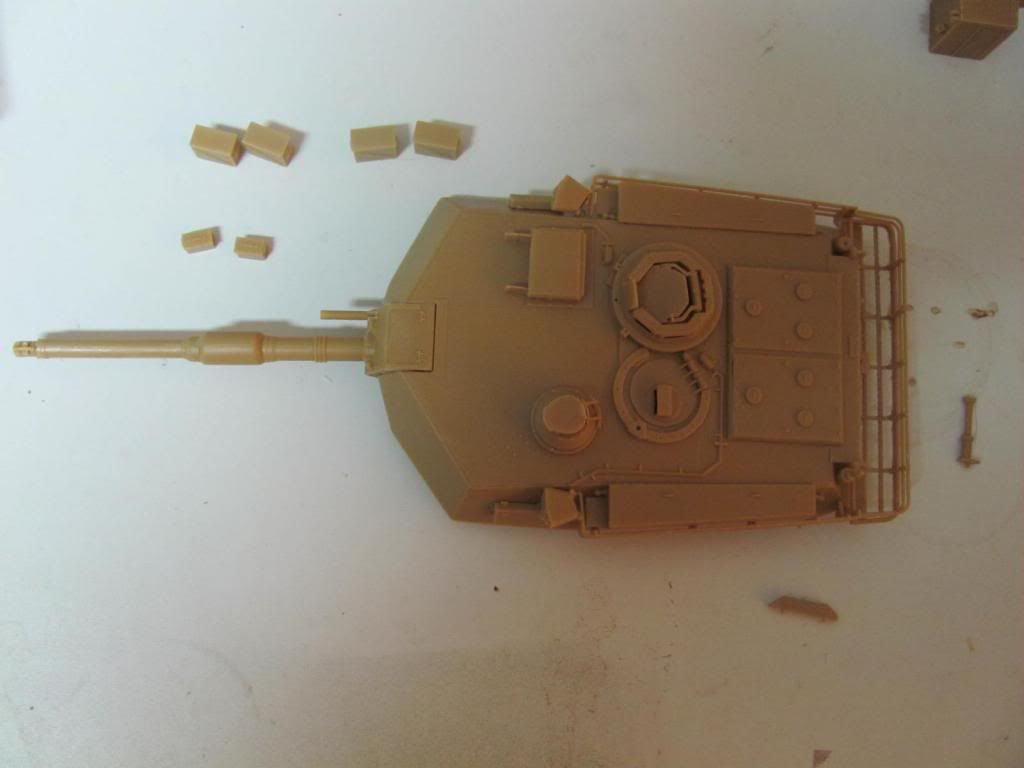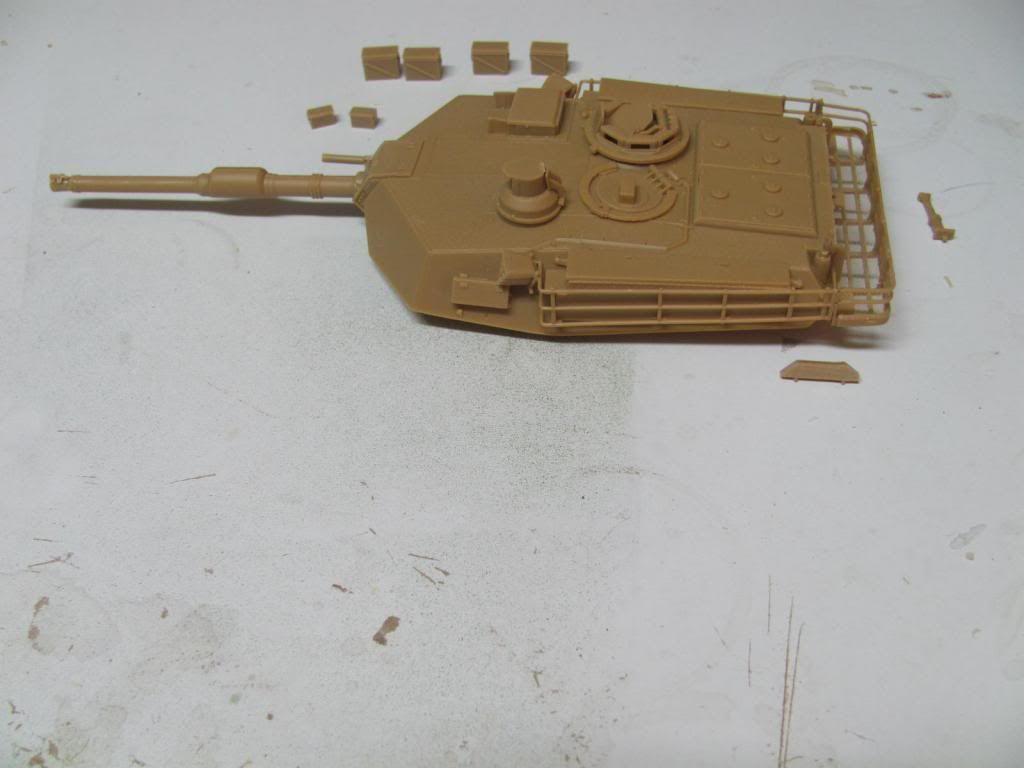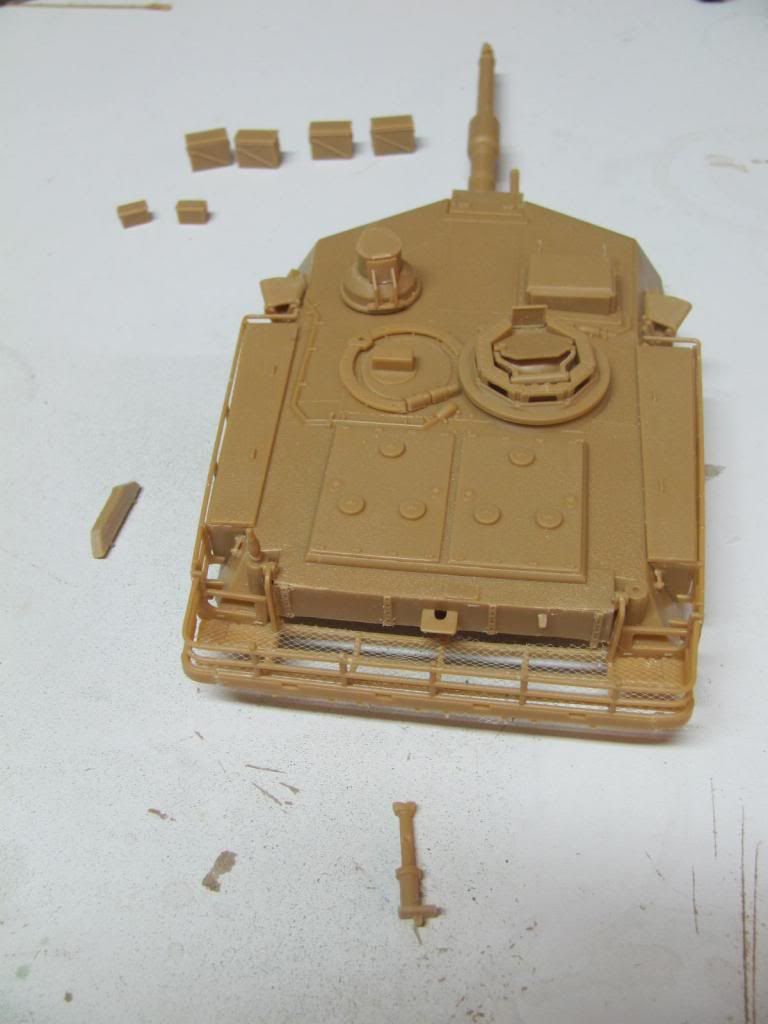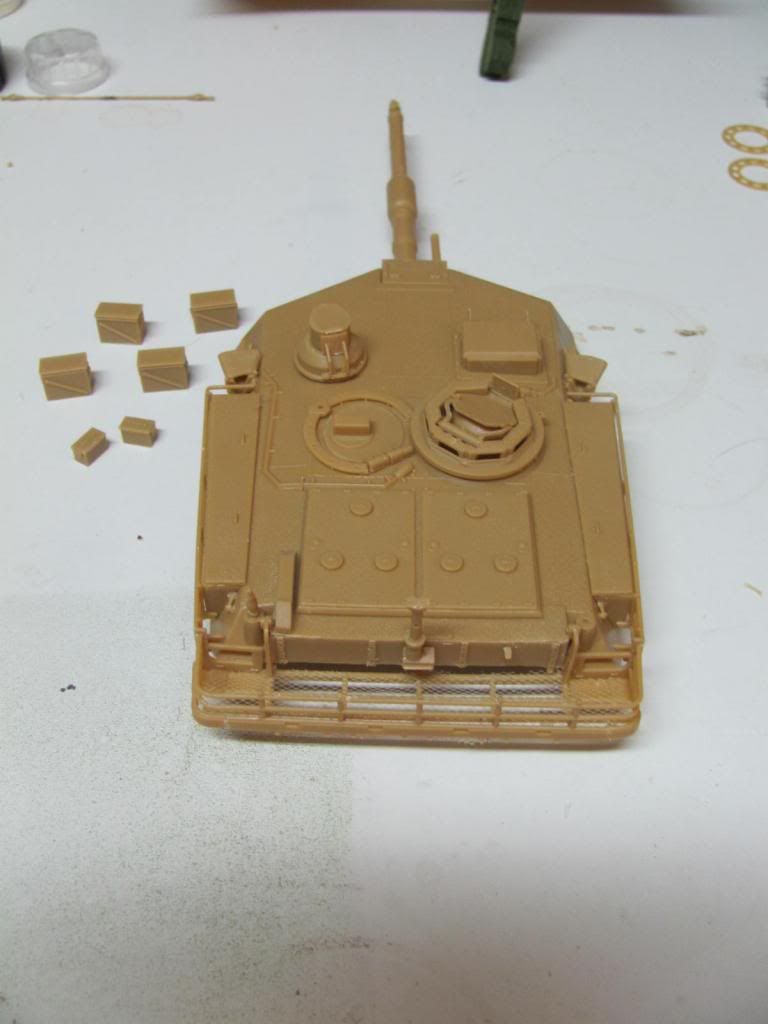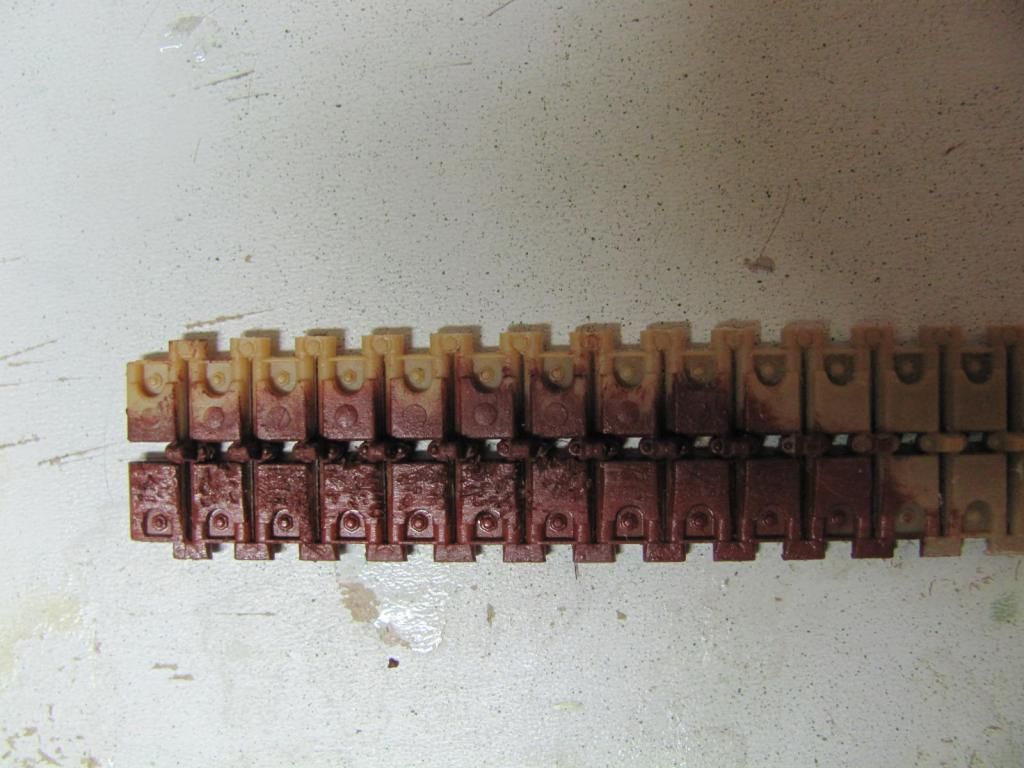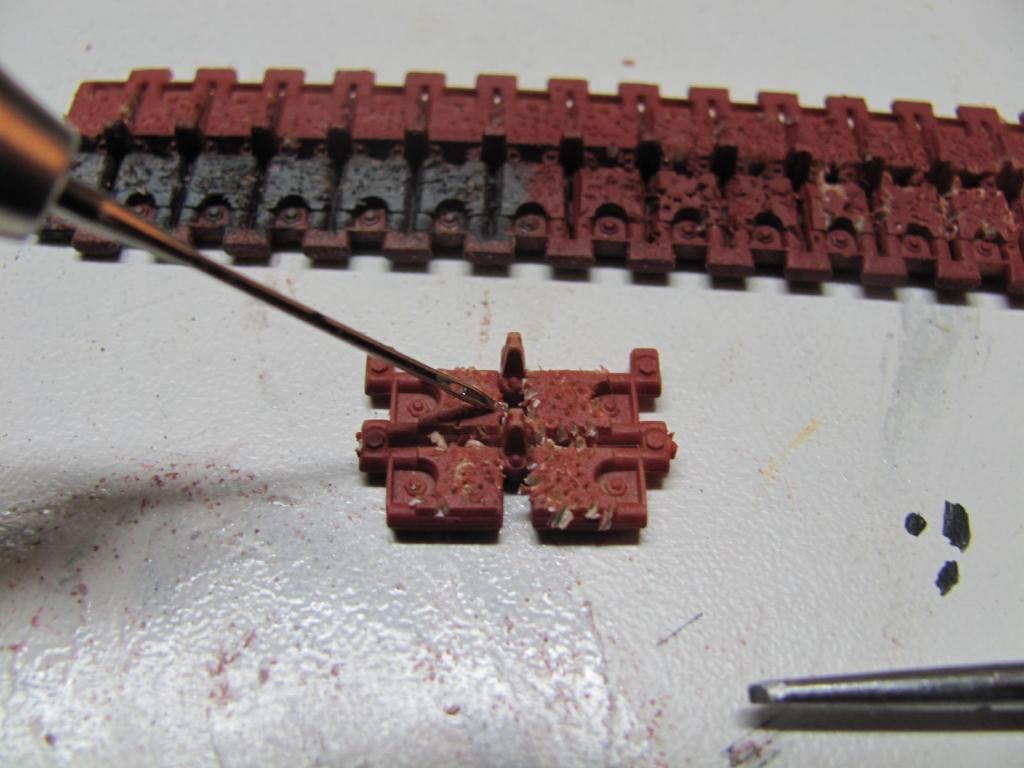Tankbuilder
Active member
Shalom.
I started posting this thread over in the Help section to get some help. That thread started to morph into a build thread. I figured it would be better to have it here as the build progresses and new problems or issues crop up. I originaly didn't plan to do a build thread but a number of images have been posted in that help thread. Based on the replies there I figure there might be interest in how this build turns out.
I'm not an M1 Abrams expert but I have had to do some extra research online to find out what some parts in the kit were for and also to help with fixing some issues.
This is actually a repop of a Trumpeter kit and it would be great if, and I repeat IF, you want to build an early M1A1 variant and/or a training version of that.
You get both vinyl band tracks and link and length tracks. You also get poly hub caps to hold the wheels on. This is too bad since that means there is a gap at each hub cap that should not be there.

A BIG problem with this kit is that the instructions do NOT tell you which parts are for the training variant. Thus it'd be very easy for someone to build the training variant and then place the completed model in a Combat setting.
For the training variant you get 3 extra assemblies:
A blank firing device for the ma deuce .50 cal machine gun.

A Hoffman Device for the main gun.

A signal Lamp that registers hits.
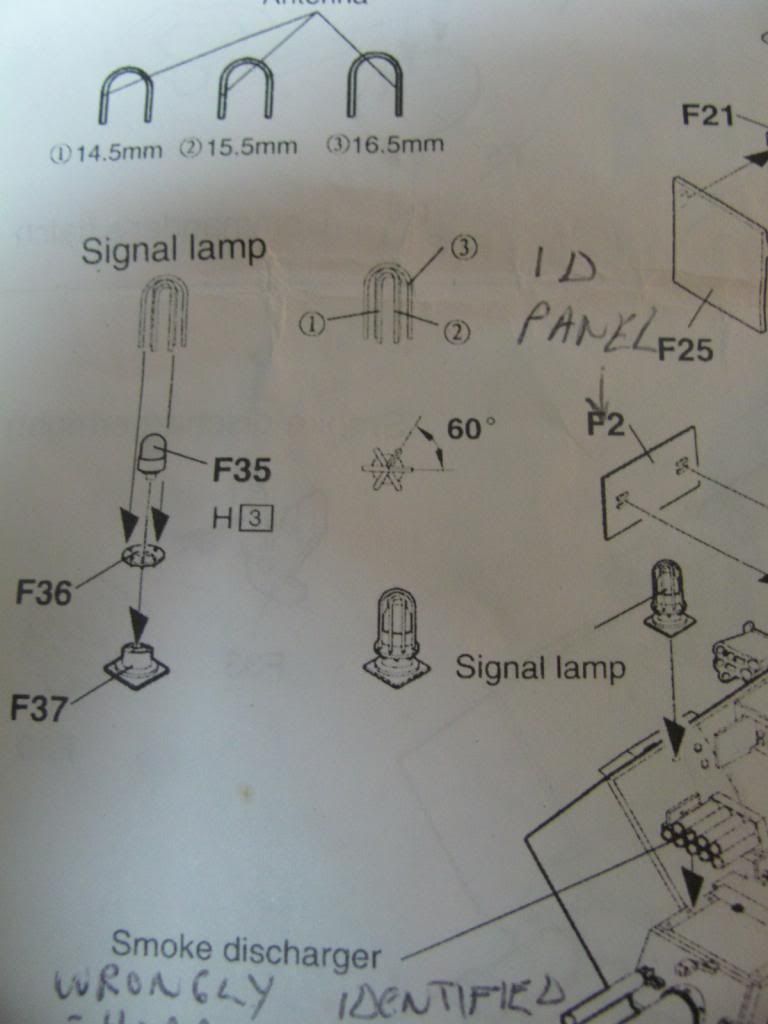
Note that you have to make the 3 rods for the blank firing device and the 3 loops for the signal lamp.
Included parts that make this an early M1A1 variant are:
Track retention discs for the two drive wheels.
In place.

Without.

Early style turret roof blast doors. These are the panels with the 3 round raised objects

A rear hull plate mounted Auxilary Power Unit (APU).
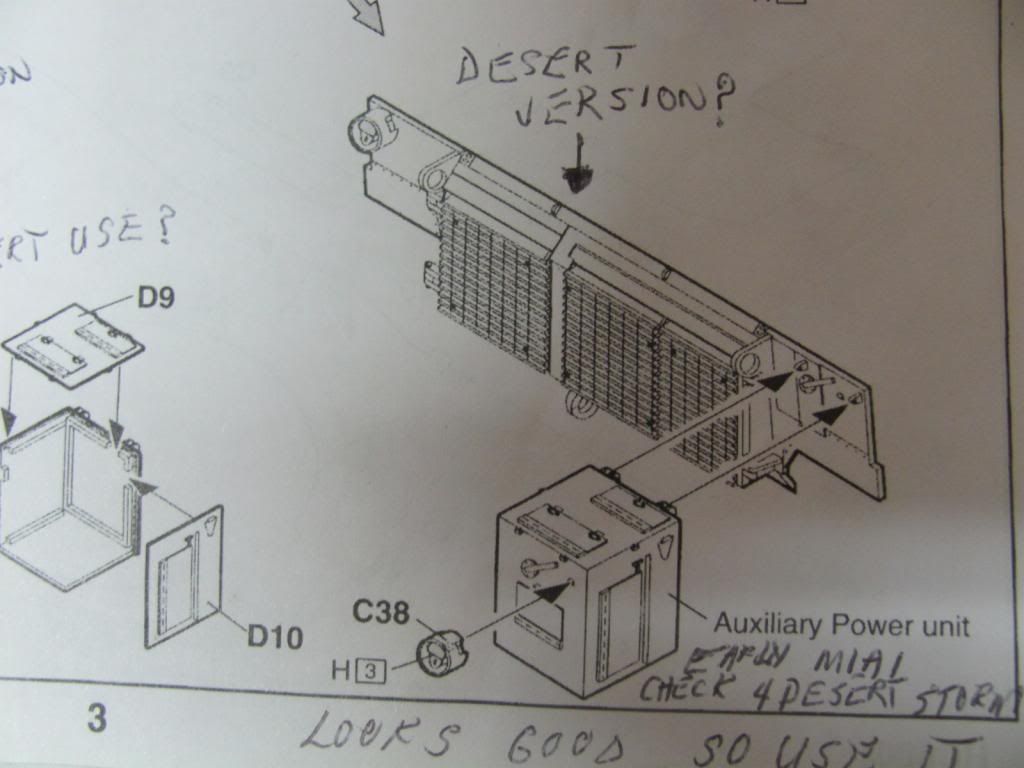
The instructions in this kit would be a lot better with some of the drawings from a different angle so that much of the guess work would be removed.
I had to use short bar clamps to get the rear turret piece to fit properly in the opening left by the turret roof and bottom. When I first assembled it there was a gap about 1 mm high there at the bottom.

Speaking of gaps. The Periscope housing in my kit vaguely resembled the housing shown in the instructions. I had to sand off the two uneven sides to get a smooth side on each side that would then fit flush to the turret roof. The doors that protect the periscope are also recessed in this housing. This means that the gap visible in front of the periscope and on the roof needs to be filled.
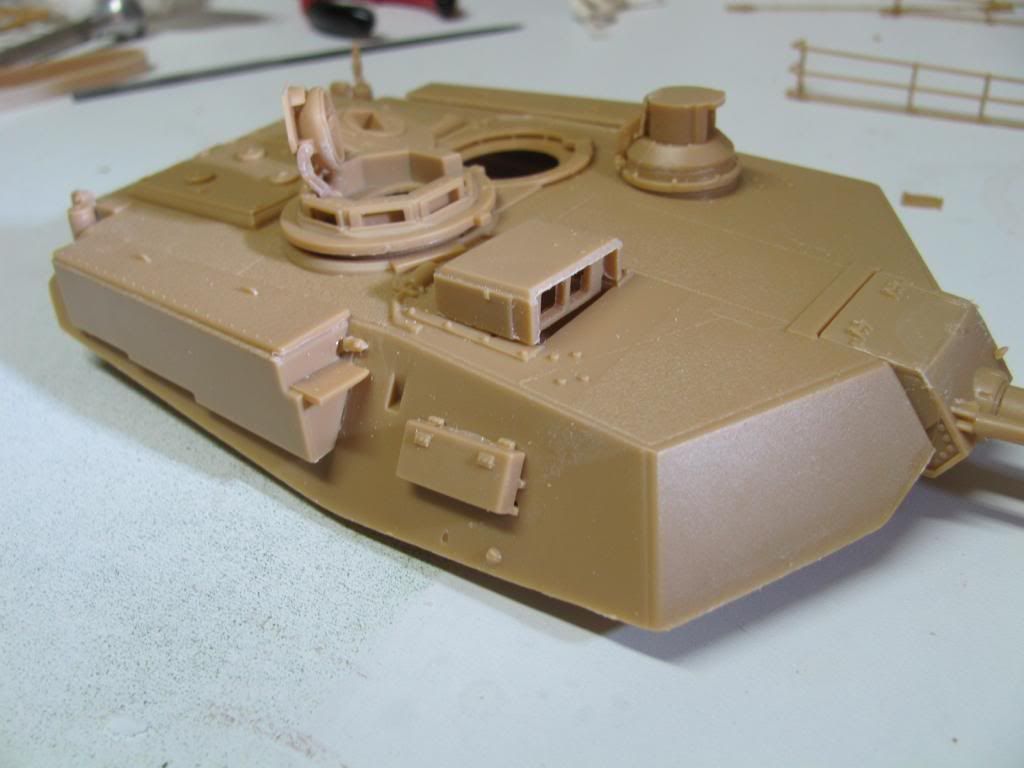
When I get that gap filled and the doors put on I'll post another image of it. The periscope housing in the above image is only dry fitted to the model.
Comments and or questions are welcomed.
Cheers from Peter
I started posting this thread over in the Help section to get some help. That thread started to morph into a build thread. I figured it would be better to have it here as the build progresses and new problems or issues crop up. I originaly didn't plan to do a build thread but a number of images have been posted in that help thread. Based on the replies there I figure there might be interest in how this build turns out.
I'm not an M1 Abrams expert but I have had to do some extra research online to find out what some parts in the kit were for and also to help with fixing some issues.
This is actually a repop of a Trumpeter kit and it would be great if, and I repeat IF, you want to build an early M1A1 variant and/or a training version of that.
You get both vinyl band tracks and link and length tracks. You also get poly hub caps to hold the wheels on. This is too bad since that means there is a gap at each hub cap that should not be there.

A BIG problem with this kit is that the instructions do NOT tell you which parts are for the training variant. Thus it'd be very easy for someone to build the training variant and then place the completed model in a Combat setting.
For the training variant you get 3 extra assemblies:
A blank firing device for the ma deuce .50 cal machine gun.

A Hoffman Device for the main gun.

A signal Lamp that registers hits.

Note that you have to make the 3 rods for the blank firing device and the 3 loops for the signal lamp.
Included parts that make this an early M1A1 variant are:
Track retention discs for the two drive wheels.
In place.

Without.

Early style turret roof blast doors. These are the panels with the 3 round raised objects

A rear hull plate mounted Auxilary Power Unit (APU).

The instructions in this kit would be a lot better with some of the drawings from a different angle so that much of the guess work would be removed.
I had to use short bar clamps to get the rear turret piece to fit properly in the opening left by the turret roof and bottom. When I first assembled it there was a gap about 1 mm high there at the bottom.

Speaking of gaps. The Periscope housing in my kit vaguely resembled the housing shown in the instructions. I had to sand off the two uneven sides to get a smooth side on each side that would then fit flush to the turret roof. The doors that protect the periscope are also recessed in this housing. This means that the gap visible in front of the periscope and on the roof needs to be filled.

When I get that gap filled and the doors put on I'll post another image of it. The periscope housing in the above image is only dry fitted to the model.
Comments and or questions are welcomed.
Cheers from Peter



